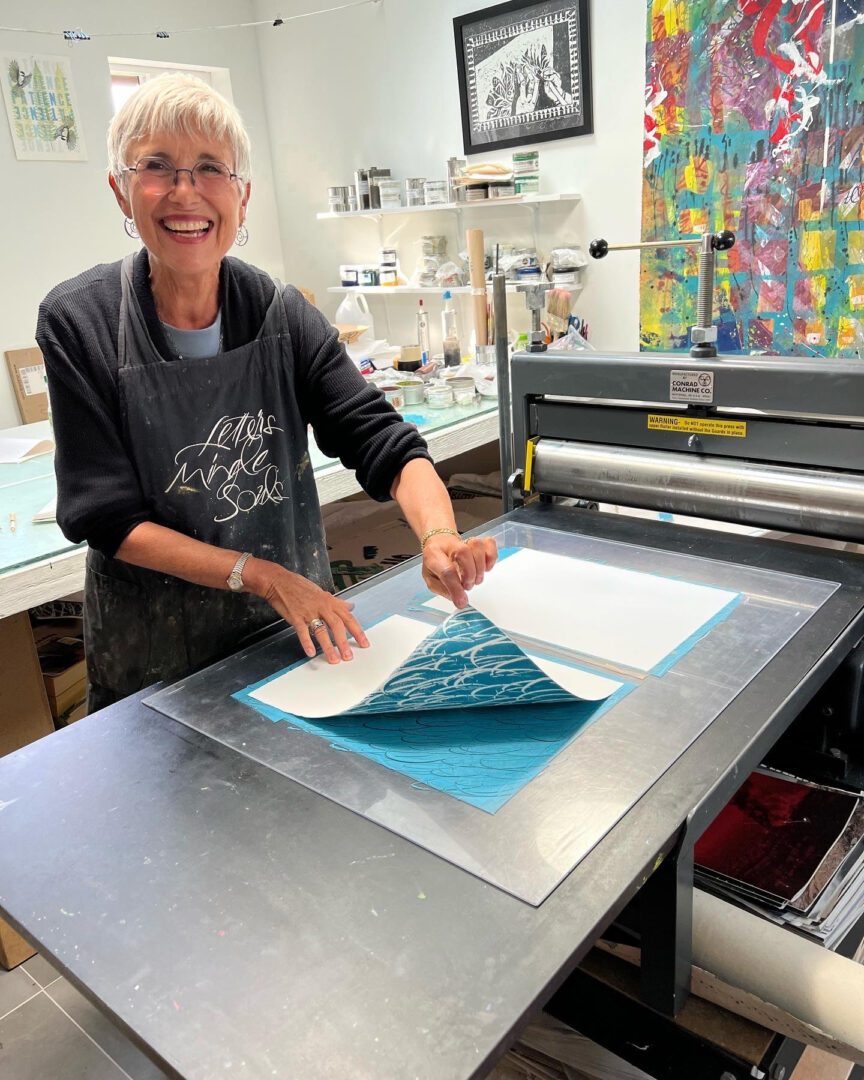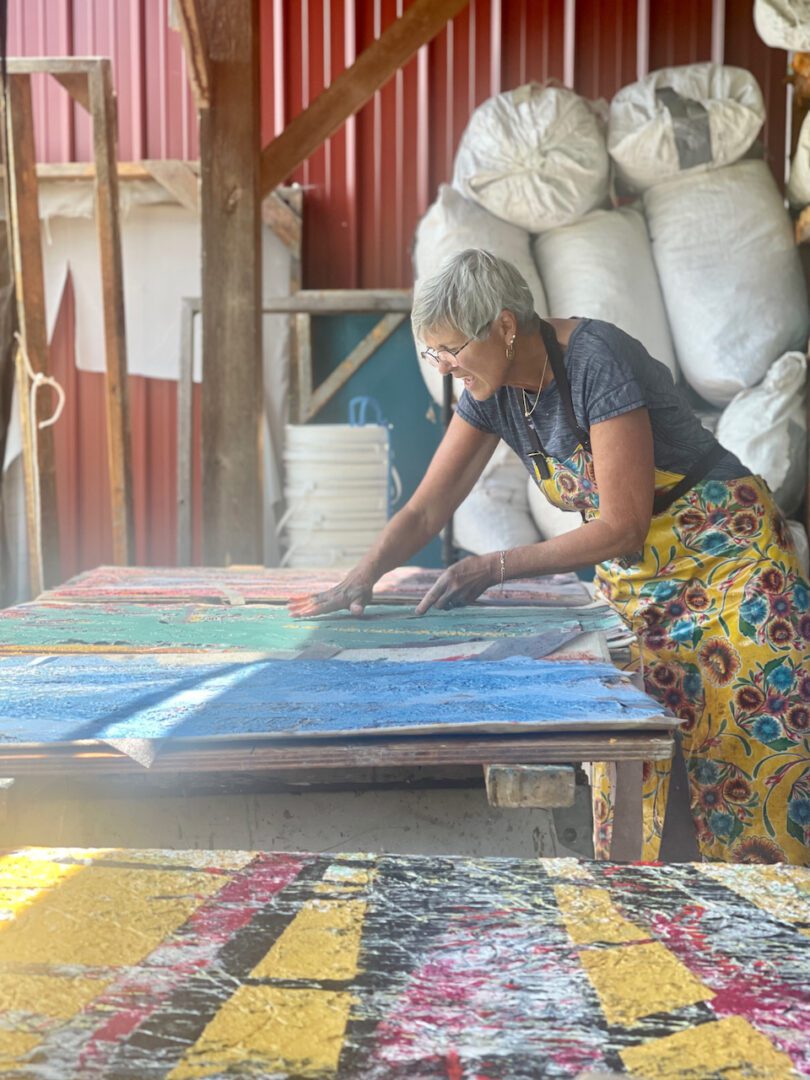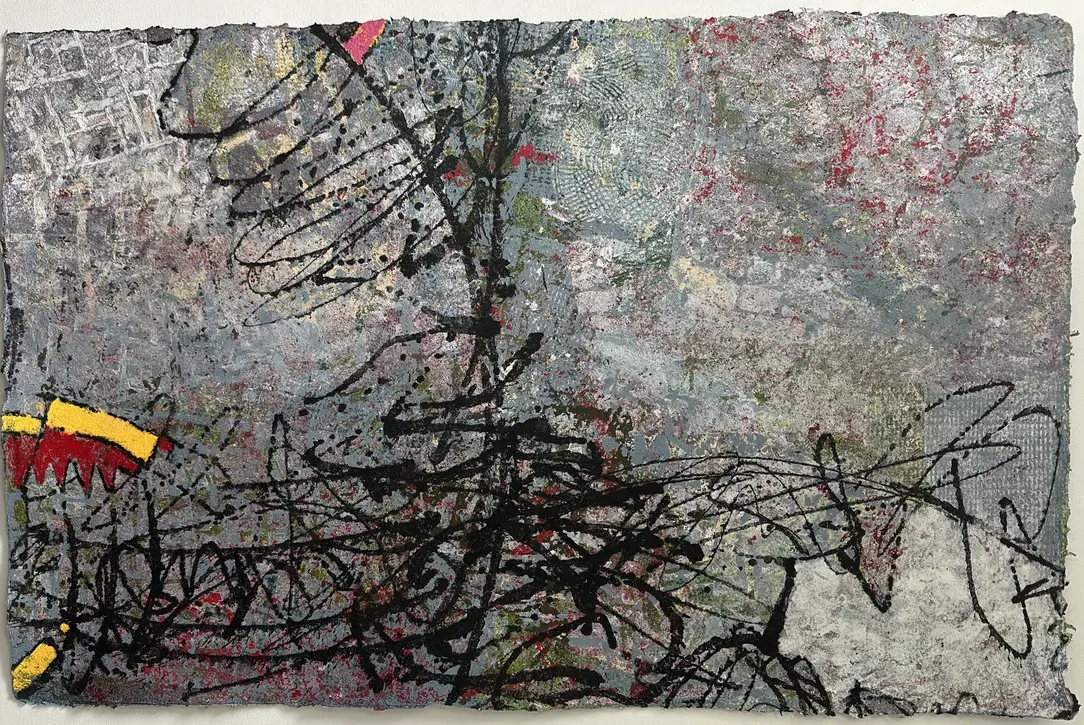
Lea Basile-Lazarus
Artist
Biography
Lea Basile Lazarus received her BA in Art Education from The College of New Jersey and her MFA, with a concentration in Printmaking, from the School of the Art Institute of Chicago. She has been teaching for over 25 years. After teaching art for 16 years in Winnetka District 36, Lea retired from public school education and then spent the next 5 years teaching Visual Arts at Beacon Academy, a Montessori High School in Evanston. Through her years of teaching, Lea has worked with Chicago public schools on collaborative social justice art projects. She has been a recipient of a Teacher Fulbright trip to Japan, spending three weeks abroad learning about Japan’s culture, art, and education system. And through a non-profit organization called Do Your P'Art, Lea was sent to Africa to visit Ghanaian schools and villages. These experiences have affected the images that she has created over the years.
Lea has been a printmaker for over 40 years. Currently, she makes monotypes, which are one-of-a-kind prints, and paper pulp paintings that incorporate multiple layers of colors, shapes, images, and textures. Lea’s current body of work reflects her reactions to the world around her — politics, social justice issues, community interactions, or her environment. Exploration of these materials and contemporary techniques has provided the tools for Lea to create unique surfaces that express the thoughts and emotions that relate to her immediate community and the greater world. Lea has exhibited her work throughout the Chicagoland area. Over the past few years, Lea has had one-person shows at 1100 Florence Gallery, Evanston; The Center on Halsted, Chicago; and Lill Street Art Center, in Chicago. She has also participated in two-person print and poetry shows at the Noyes Cultural Arts Center and the Evanston Public Library. Lea has recently moved to the Pacific Northwest where she hopes to continue making and exhibiting her artwork.



Artist Statement
My current body of work reflects my reactions to the world around me — politics, social justice issues, community interactions, or my environment. We have had our share of difficult years, trying to navigate turbulent political forces and social injustices that continually occur in our society. I have recently moved from an urban environment, Evanston, Illinois, to a more rural environment, Gig Harbor, Washington. My tone has changed. We have a new president and I am surrounded by water and greenery that I am in awe of everyday; now there is more peace and more solitude in my life. Even so, deep concerns still remain and some of my newer pieces display these emotions. I make art out of the need to react, to express, and to reflect.
During the Covid pandemic, I have been weaving paper together, repurposing some prints and paper pulp paintings. The weaving process has been therapeutic and printing on these surfaces has been exciting to explore. Recently, I have been embossing, printing, weaving, painting, and drawing. I have also been creating my images through contemporary paper making techniques. Like printmaking, this process has allowed me to work on several images at one time, moving from one to another, layering different stencils, colors, and ideas. Paper pulp painting is spontaneous; I am actively engaged in the process. My entire body is always moving, from mixing pigments in paper pulp, to cutting stencils, to making marks or writing words with syringes and turkey basters with the gestural movement of my arm. The mental and physical energy it takes to think, move, and react to the images that are emerging is what makes this process so exciting and invigorating. The mark making becomes the conversations, the emotions, and the words that are not meant to be heard. The colors can be conflicting and dramatic. They can also be peaceful for those moments when we forget and are able to breathe more freely. Exploration of these materials and contemporary techniques has provided the tools for me to create unique surfaces that express the thoughts and emotions that relate to my immediate community and the greater world.